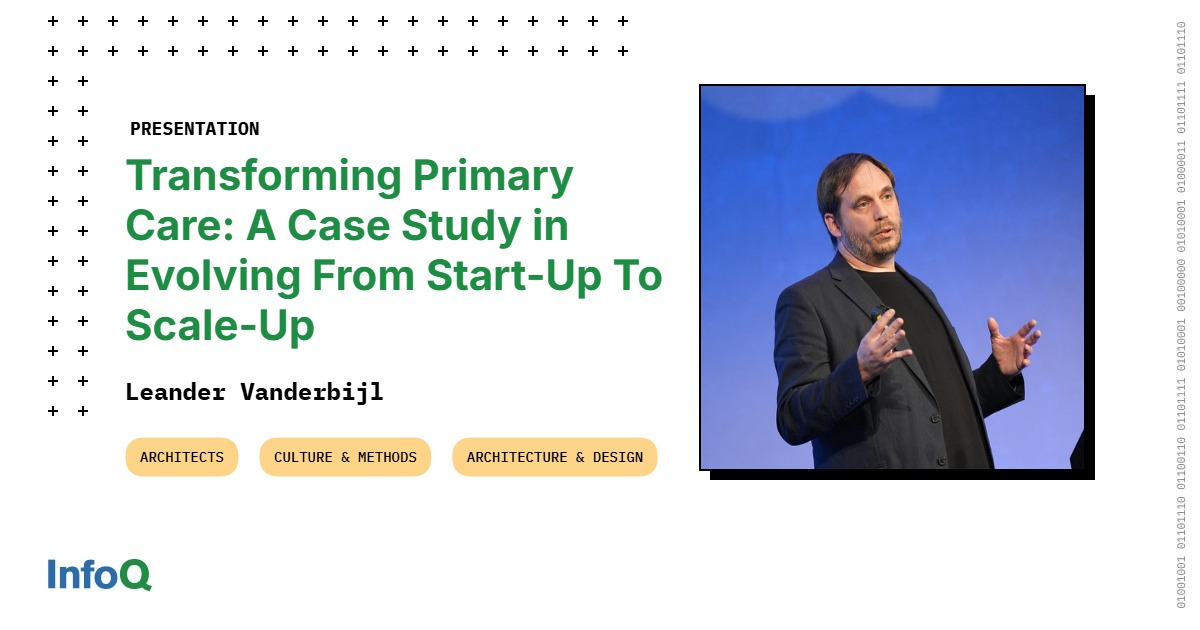
"Have you ever built the perfect application? Beautifully crafted your models so that everything fits the real-world objects that you think you're going to have in your system? Only to wake up one morning and your PM comes to you and says, yes, that's great, but what if it just did this a little bit differently? With that one sentence, your entire premise is thrown out the window. All of your assumptions are proven false and your beautiful system is impossible to work with."
"What about that perfect architecture you've developed? Very clean, you've got onions and layers and all of that fun stuff, and it works perfectly. You don't know when and you don't know why particularly, but over time you suddenly come back to it and this beautiful application has become a spiderweb's nest of impossible dependencies. I've been there. We've had that problem."
Kry evolved through startup and scaleup phases, and systems changed while finding product-market fit. Rapid feature-driven development produced loosely organized endpoints and tangled dependencies. Product changes often invalidated original models and architectures, turning clean designs into spiderweb nests. The company is adopting domain-driven design to clarify boundaries, reduce coupling, and align services with domain functionality. Development mindset is shifting from building feature-specific endpoints toward providing reusable functionality for any client. Evolution practices are becoming deliberate and goal-directed to prevent organic decay and ensure predictable architectural growth. Teams coordinate around a shared evolution plan so everyone knows where development is headed.
Read at InfoQ
Unable to calculate read time
Collection
[
|
...
]